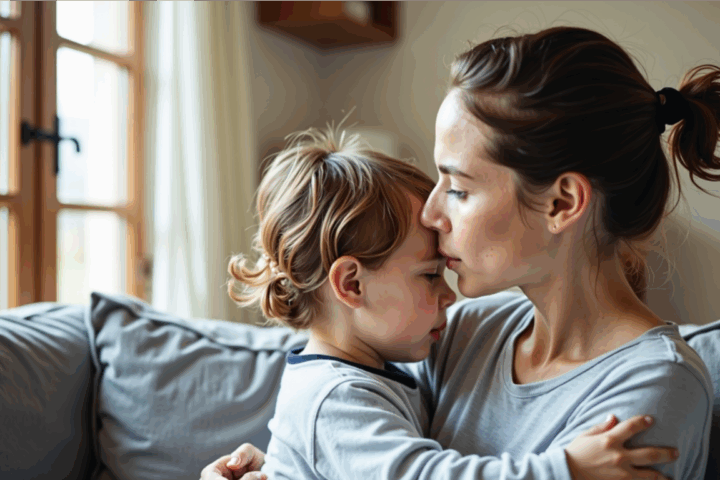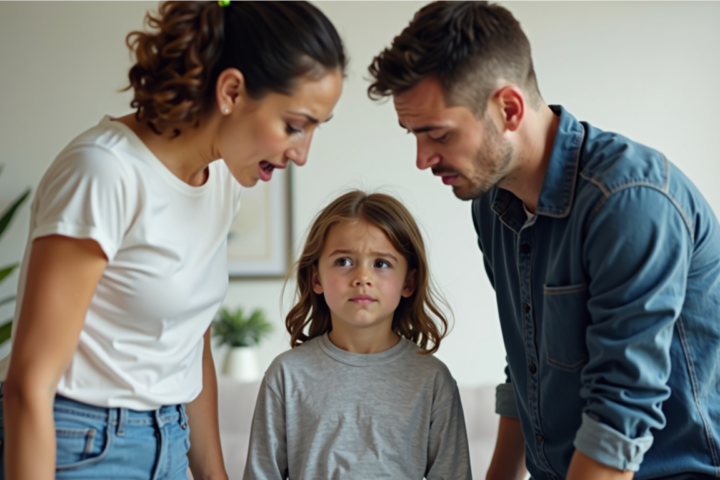If you’ve ever watched a child crumble after getting a 94%, refuse to raise their hand unless they’re 100% sure of the answer, or panic when their drawing doesn’t match what they imagined—it’s not just high standards. You’re witnessing the intersection of perfectionism and anxiety in kids.
What looks like motivation is often fear in disguise. Children who experience anxiety may internalize the message that mistakes are dangerous. Perfectionism, then, becomes a form of self-protection.
Why Anxiety in Kids Often Goes Unnoticed
Anxiety in kids doesn’t always show up as worry. It can mask itself as overachieving, quiet compliance, or even irritability. These kids might not say, “I feel anxious,” but their bodies and behaviors tell a different story.
Perfectionism becomes a way to control the environment and prevent perceived rejection, embarrassment, or failure. But this control comes at a cost—emotional exhaustion, avoidance, and shame.
Research on Rising Perfectionism and Anxiety in Kids
Perfectionism is on the rise—and so is anxiety in kids. A 2017 study published in the Psychological Bulletin found that rates of self-oriented and socially prescribed perfectionism have increased significantly over the past three decades among young people (source).
Children are absorbing the pressure to excel academically, socially, and even emotionally. When anxiety is unaddressed, that pressure grows internally, often leading to burnout or self-doubt.
The Neuroscience of Anxiety in Kids
Anxiety isn’t just a mindset—it’s a physiological experience. When a child feels unsafe (socially, emotionally, or physically), the brain activates a stress response. This can look like fight (meltdowns), flight (avoidance), or freeze (shutdown). These are automatic nervous system responses, not misbehavior.
Helping kids with anxiety means regulating their nervous systems first—through connection, attunement, and co-regulation—not simply offering logic or discipline (source)
How Parents and Teachers Can Spot Anxiety in Kids
Kids don’t always say, “I’m anxious.” Instead, they show us through patterns, behavior, and body language.
Common Signs of Anxiety in Kids
-
Perfectionism in schoolwork: Won’t turn in an assignment unless it’s perfect
-
Avoidance or procrastination: Especially with writing, speaking, or trying new things
-
Somatic symptoms: Frequent stomachaches or headaches, especially before school
-
Meltdowns over small things: Mistakes or transitions may trigger outbursts
-
Clinginess or constant reassurance-seeking: Needs to be told they’re “okay.”
-
Irritability: Often mistaken for attitude or defiance
-
Shutting down: Withdrawal, zoning out, or refusing to engage
-
Sleep disruptions: Trouble falling asleep or nightmares
By seeing these signs as signals of dysregulation—not defiance—we can respond to what the child needs, not just what they show (source).
Creating Safe Spaces to Reduce Anxiety in Kids
A “safe space” isn’t just a quiet corner in a classroom. It’s a relational atmosphere where a child’s nervous system senses: “I don’t have to be perfect to belong.”
Anxiety in kids softens when safety is embodied—not just taught.
Core Pillars of Emotionally Safe Spaces
| Pillar | Practice Example | Why It Matters |
|---|---|---|
| Predictability | Visual schedules, consistent routines | Lowers uncertainty, a common anxiety trigger |
| Permission to be imperfect | “What did we learn from this mistake?” | Builds resilience and reduces shame |
| Calm adult presence | Slowing tone and sitting near a child in distress | Co-regulates the child’s nervous system |
| Emotional validation | “It makes sense you feel that way.” | Increases interoception and trust |
| Autonomy with scaffolding | Offering small choices (“Pencil or marker?”) | Builds agency, reduces fear of failure |
| Repair after rupture | “I raised my voice. That wasn’t fair to you.” | Models accountability and safety after conflict |
More Examples for Home and School
-
Create cozy regulation corners with sensory tools
-
Use affirmations: “Mistakes are welcome here.”
-
Begin transitions with rituals: grounding breaths or movement
-
Replace outcome praise (“You’re so smart”) with process praise (“You worked hard on this”)
-
Normalize adult imperfection—repair after yelling, admit when you’re overwhelmed
When children feel safe to mess up, they become free to learn, grow, and connect.
What Teachers Can Do to Support Kids with Anxiety
Teachers are in a powerful position to model regulation and create emotional safety.
Support Strategies for the Classroom
-
Share your own learning process. “Oops—I misspelled that. Let’s fix it together.”
-
Offer low-pressure practice. Use drafts and retakes to reduce perfectionism paralysis.
-
Celebrate effort, not outcomes. Praise creativity, not just correctness.
-
Introduce emotional check-ins. A feelings thermometer or colors chart helps children express how they feel.
-
Provide structured choices. “Would you like to work with a partner or solo?”
-
Respect sensory needs. Allow headphones, movement breaks, or quiet spaces without shame.
When teachers focus on connection over correction, students thrive.
What Parents Can Do to Support Kids with Anxiety
You don’t have to fix everything. You just have to show up—with softness, presence, and a willingness to grow alongside your child.
Support Strategies for Parents
-
Validate emotions without rescuing. “That feels really hard. I believe in you.”
-
Use co-regulation before correction. Hug first, talk second.
-
Model self-compassion. Let your child hear you say: “I made a mistake. That’s okay. I’ll try again.”
-
Create repair rituals. When you’ve lost your cool, circle back: “You didn’t deserve that. I’m sorry.”
-
Focus on progress over perfection. Help them see growth, not just grades.
Parenting anxious children can stir your fears. Take care of yourself, too. Healing is a family system process. If you find that you have challenges with perfectionism, check out The Truth About Perfectionism and The Perfectionism Trap .
Building Long-Term Resilience in Kids with Anxiety
True resilience doesn’t come from teaching kids to push through or toughen up. It emerges when they feel emotionally and physically safe—safe enough to try, safe enough to fail, and safe enough to trust that their worth isn’t measured by performance.
When a child with anxiety begins to internalize the message, “I am still safe even when I mess up,” their nervous system slowly shifts from chronic fight-or-flight to grounded presence. This isn’t a quick fix. It’s a slow, relational rewiring built on repeated experiences of co-regulation, emotional attunement, and validation.
Practices That Build Long-Term Resilience:
- Co-regulation over correction: Before offering a solution, offer presence. Breathe with them. Sit beside them. Let their body learn: “I’m not alone.”
- Name the nervous system state: Teach kids to recognize when they are in fight, flight, or freeze mode. Use body-based cues: “Your tummy hurts—maybe that’s your anxiety talking.”
- Celebrate courage, not just outcome: Say, “It was brave to try that,” even if it didn’t go well.
- Build relational repair loops: After rupture, circle back. Say, “We got disconnected. Let’s try again together.”
- Anchor them in belonging. Remind them, “You are loved exactly as you are. No performance is needed.”
Anxiety loses its grip when these messages are repeated and embodied over time. Children no longer need perfectionism to feel safe. They start trusting their ability to cope, connect, and grow.
A Final Word: You Don’t Have to Do This Alone
🧩 Co-parenting an anxious child can activate old wounds and relational stress.
I work with couples navigating parenting stress, communication breakdowns, and mismatched coping styles.
👉 Reach out for couples therapy or schedule a free 30-minute consult to see how I can support your partnership.











